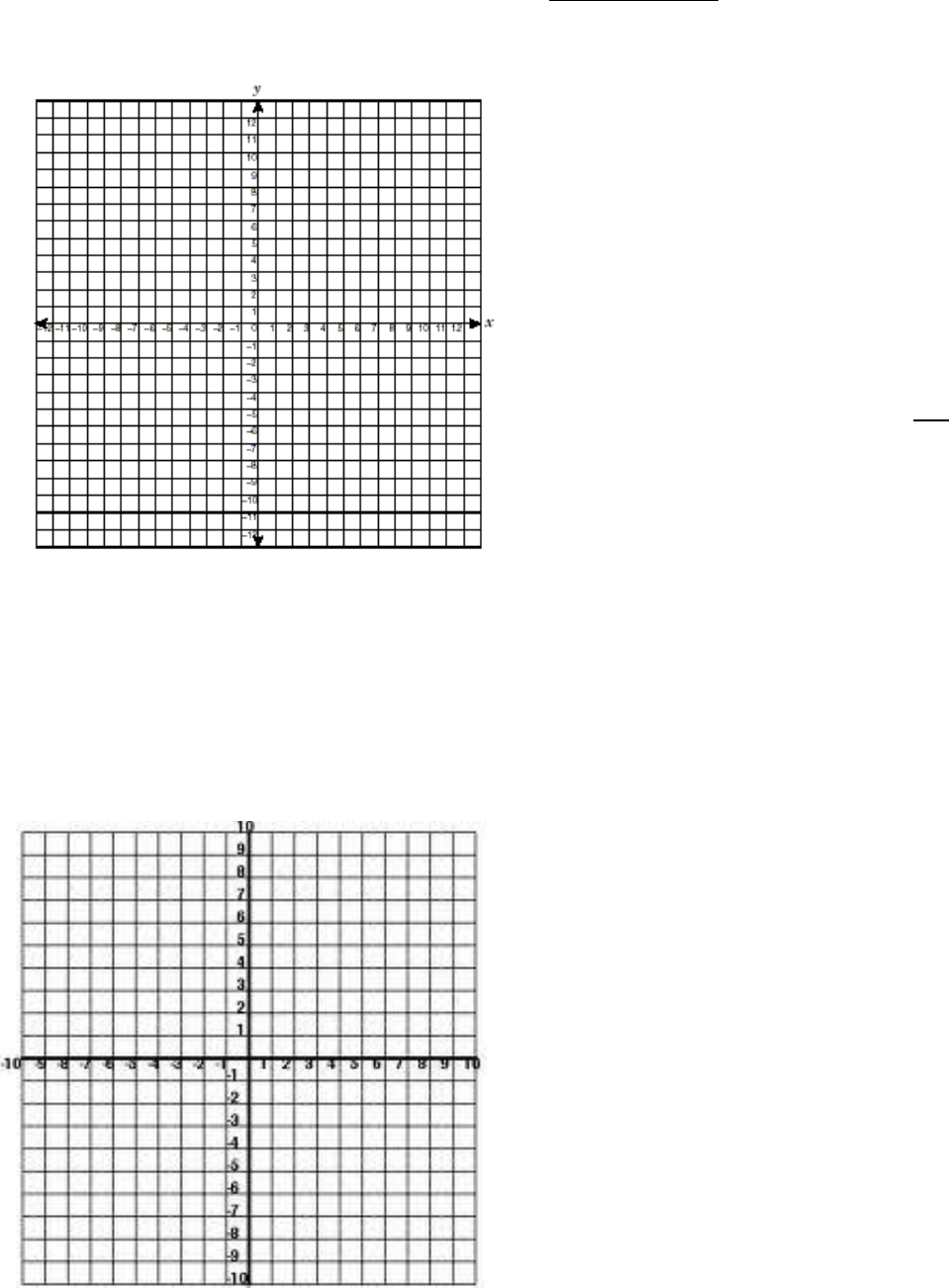
~ 4 ~
Lesson 7: Proving Special Quadrilaterals
Standard: G.GPE.4: Use coordinates to prove simple geometric theorems algebraically. Standard: G.GPE.5: Prove the slope criteria for parallel and perpendicular
lines; use them to solve geometric problems (e.g., find the equation of a line parallel or perpendicular to a given line that passes through a given point). Standard:
G.GPE.6: Find the point on a directed line segment between two given points that partitions the segment in a given ratio. Standard G.GPE.7: Use coordinates to
compute perimeters of polygons and areas of triangles and rectangles.
Essential Question: How do you use coordinates to prove special quadrilaterals?
When a figure is in the coordinate plane, you can use the Distance Formula to prove that sides are congruent and you can use the
slope formula to prove that sides are parallel or perpendicular.
Important formulas (YOU NEED TO KNOW THESE!)
Slope:
Midpoint:
Distance (length):
Prove a quadrilateral is a:
- Parallelogram
- Rhombus
- Rectangle
- Square
- Trapezoid
- Isosceles trapezoid
THREE PARTS
-Formulate a plan
-Use slope, midpoint, and/or distance
formulas to execute plan
-Create concluding statement to justify
the
Proof

~ 5 ~
EXAMPLE: Prove that are the vertices of a
parallelogram.
1. Graph and prove that the points represent the vertices of a parallelogram.
A.
B.

~ 6 ~
2. Prove that the quadrilateral whose vertices are the
points A(-1,1), B(-3,4), C(1,5) and D(3,2) is a
parallelogram.
4. Quadrilateral DEFG has vertices at D (3, 4), E (8, 6), F (9,
9) and G (4, 7). Prove that DEFG is a parallelogram.
3. Quadrilateral ABCD has vertices A (2, 3), B (10, 3), C (10, -
1), and D (2, -1). Prove quadrilateral ABCD is a rectangle
5. The coordinates of the vertices of quadrilateral ABCD are
A (-3,-1), B (6, 2), C (5, 5), and D (-4, 2). Prove that
quadrilateral ABCD is a rectangle.
.

~ 7 ~
6. Quadrilateral QRST has vertices Q (6, 7), R (11, 7), S (8, 3),
T (3, 3). Prove quadrilateral QRST is a rhombus
8. Quadrilateral RHOM has vertices R (-3, 2), H (2, 4), O (0,-
1), and M (-5,-3). Using coordinate geometry, prove that
RHOM is a rhombus.
7. The coordinates of the vertices of quadrilateral ABCD are
A(4,1), B(1,5), C(-3,2) and D(0,-2). Prove the
quadrilateral is a square.
9. Quadrilateral EFGH has vertices E (-7, 0), F (-2, 0), G (-2, -
5), and H (-7, -5). Prove quadrilateral EFGH is a square.

~ 8 ~
10. Quadrilateral JKLM has vertices J (4, 7), K (11, 0), L (7, 0),
and M (4, 3). Prove quadrilateral JKLM is an isosceles
trapezoid.
11. Quadrilateral TRAP has vertices T(-3,0), R(-3,5), A(6,8),
and P(9,4). Prove that quadrilateral TRAP is an isosceles
trapezoid.
Quadrilaterals
Parallelogram
-using distance formula, prove that opposite
sides are congruent
Rhombus
-using distance formula, prove that all sides are
congruent
Rectangle
-using distance formula, prove that opposite
sides are congruent (parallelogram) and diagonals
are congruent
Square
-using distance formula, prove that all sides are
congruent
-using slope formula, prove that there are four
right angles (perpendicular sides)
Trapezoid
-using slope formula, prove one pair of sides is
parallel (same slope), and the other pair is not
(different slope)
Isosceles Trapezoid
-using slope formula, prove one pair of sides is
parallel (same slope), and the other pair is not
(different slope)
-using distance formula, prove the non-parallel
sides are congruent
